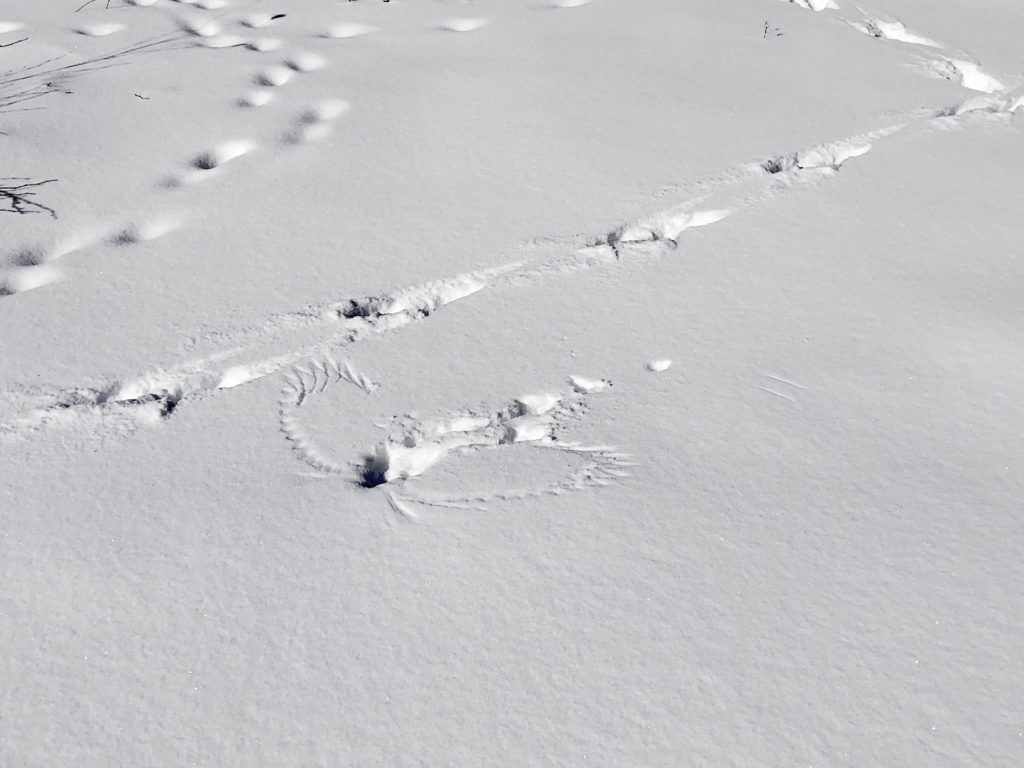Welcome to Creature Feature, a biweekly series from the CELT education team highlighting local flora and fauna. Each article introduces an organism that you might encounter in your backyard or on our trails.
This time of year with the temperatures below freezing and the ground covered in snow and ice it is hard to imagine that just below our feet there is a whole world of busy activity taking place.

Many small mammals like mice, voles, and shrews all remain active through the winter months. They live in a special area called the subnivean zone. The word subnivean comes from the Latin “sub” (under) and “nives” (snow). Mice, voles, and shrews retreat to the subnivean zone for protection from cold temperatures, bitter winds, and hungry predators.
The subnivean zone is the area between the surface of the ground and the top of the snowpack. This amazing winter habitat contains a labyrinth of tunnels and chambers used by the animals to store food, sleep, travel, and enter and exit their hidden world below. Some of the animals in the subnivean zone create food caches below the snow to ensure they will have enough food for the winter. The tunnels also provide a path to different food sources such as seeds, grasses, and nuts that may be near the base of trees or downed logs.
This unique winter habitat is formed in two ways. First, when the snow falls and lands directly on hardy vegetation, piled up logs and branches, or overhanging rocks, it is blocked from accumulating underneath on the ground. This creates a layer of space for animals to move around in. At the same time, the ground warms the snow that is closest to the surface or touching the ground and creates water vapor. As the water vapor rises it begins to form ice crystals on the underside of the snowpack. This layer of ice then begins to act like a roof and creates insulation from the cold temperatures and wind outside. As the snow continues to pile up it provides insulation that keeps the temperature in the subnivean zone at right about 32 °F for most of the winter. The holes above the ground of the subnivean zone not only provide access for the animals living below but also allow for the exhaust or release of the carbon dioxide produced by the animals living down below.
In addition to (relatively) warm temperatures and abundant places to store or hide food, the subnivean zone provides good protection from predators. That being said, predators such as owls, foxes, coyotes, and wolves all have exceptional senses of hearing. They can actually hear the movements of small mammals under the snow. You may have seen your dog listening very intently while staring at the snowy ground or even seen them follow up with leap and “punch” of the snowpack with their front paws. This is a method of hunting used by many mammal predators to find prey in the subnivean zone. By “punching” in the snowpack, they are collapsing the tunnel or chamber below therefore trapping the animal below and scoring a meal for themselves.
Some birds of prey can even hunt through the snow pack. When the snowpack is fairly thin, owls and hawks can swoop in and grab their prey directly from above. Occasionally, this activity can leave incredible prints in the snow, like the one below captured at Turkey Hill Farm this past winter.

Ermines, or short-tailed weasels in their winter coats, have another approach. In winter, the short-tailed weasel coat turns white and provides excellent camouflage allowing it to enter a tunnel and travel around looking for something to eat. They sometimes even take over a chamber created by another animal to keep themselves warm and protected.
There are clues for locating subnivean zones. As the snow melts in the spring or when we get mid-winter thaws, look for the hardened snow or ice tunnels that remain after the lighter snow has melted away. Also, next time you are out on a walk in the woods or in a field look around for small animal tracks. If you can follow those tracks, they may lead you to a hole that serves as a secret door to the subnivean world below!
